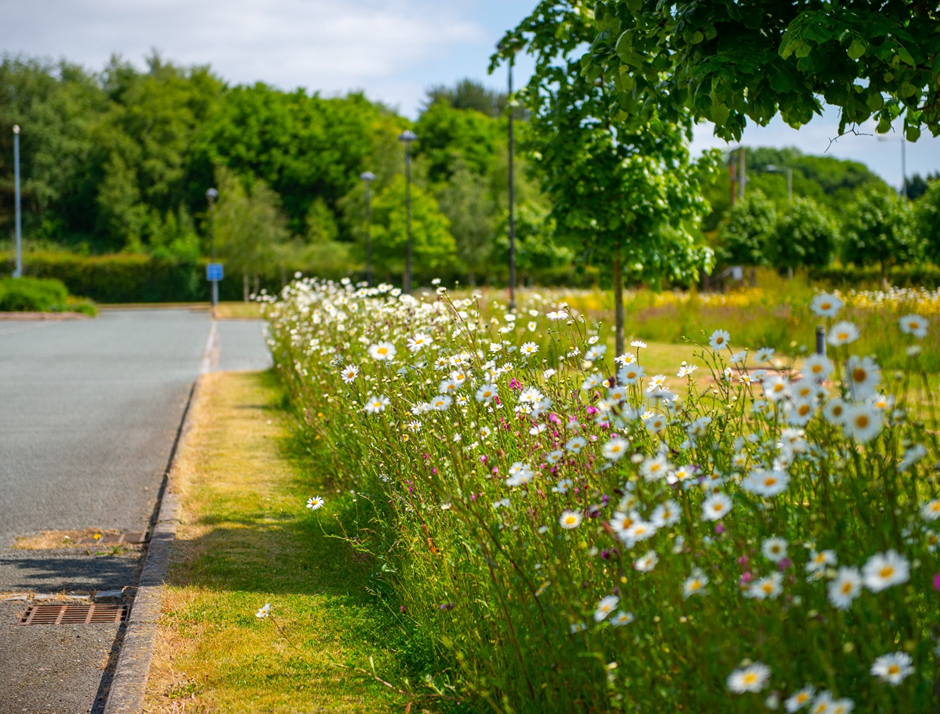Council set to take leading role in boosting local biodiversity

A fresh approach to managing some open areas of grass is set to contribute towards Newcastle-under-Lyme Borough Council’s ambitious net zero goals while also improving residents’ health.
Increasing local biodiversity through nature recovery, which plays a major part in tackling climate change, is at the heart of a new Grassland Management Strategy setting out how parks and grasslands across the borough could be maximised going forward for the benefit of people, wildlife and the environment.
Grasslands provide a habitat for more than 1,500 species of insects. They also have the capacity to capture and store vast amounts of carbon dioxide, like trees, and provide a range of other benefits such as increased pollination, flood mitigation, improved water quality and cooling to help us adapt to a changing climate.
The sustainable framework, developed by council experts in conjunction with Staffordshire Wildlife Trust, aims to strike the right balance between strategic areas where grass is allowed to grow – encouraging animals, plants, fungi and microorganisms to thrive – and the continued provision of high quality public realm to ensure Newcastle-under-Lyme remains a visually appealing and well-maintained place to live, work, visit and do business.
Under the plans, being discussed by Cabinet next week, specific pocket sites across the borough would be maintained differently during the cutting season to attract invertebrates, wildflowers and small fauna in particular. The creation of meadow-like areas would be complemented by regularly mowed sections and pathways.
The move would reduce the Council’s own carbon footprint, through reduced use of larger equipment such as tractors, and redirect some resources to other Streetscene functions.
Meanwhile, cuts to highway verges are being increased from six to eight times a year by the Borough Council, on behalf of Staffordshire County Council, to ensure tidiness and highway safety.
The Council has pledged a commitment to achieve net zero for its own operations by 2030 and the wider borough by 2050.
Cllr. David Hutchison, Cabinet Member for Sustainable Environment, said:
The Council is committed to securing a sustainable future for the borough. Since our landmark Sustainable Environment Strategy, a lot has been done in this area – including hundreds of new trees in urban areas and a series of wildflower meadows – so I welcome this new, balanced approach which would have an even greater impact on the environment and local communities.
Protecting the natural world is an important part in achieving net zero and it’s also proven to boost people’s health and well-being. Grasslands are therefore really important. We’ve already done something similar on fields by Bradwell Crematorium and it’s been a resounding success.
It’s important to strike an effective balance between increasing biodiversity and recognising that some areas, such as highway verges, require frequent mowing for safety reasons and public expectations of tidiness as well as making it easier to pick litter from. A tremendous amount of effort is put into maintaining high horticultural standards – which is consistently recognised at the highest levels by Britain in Bloom – and this will continue as the Council develops the new strategy.”
The Council is also supporting popular conservation campaign “No Mow May” at some locations, where possible, to help create habitat and provide resources for early-season pollinators such as bees.
The initiative could later include selected areas in council parks following a review and public consultation. Sports pitches and formal lawns will continue to be maintained to the current high standard.

